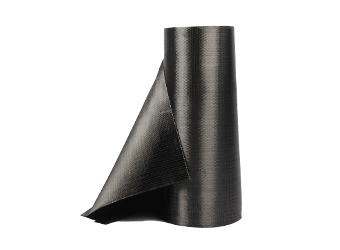Solutions
Horse Construction offers full range of structural strengthening materials with technical supports, documentation supports, products supports, project supports.
Carbon Fiber Becomes A New Favorite Of Earthquake Reconstruction And Restoration

"The killer is not the earthquake, but the building." This is a famous saying in earthquake disaster science. The above losses are caused not only by earthquakes, but also by the seismic performance of buildings. As we all know, Japan is one of the countries with the most frequent earthquakes in the world. In 2011, the earthquake of magnitude 9.0 on the Richter scale in East Japan, which shocked the world, caused the nuclear leakage accident at the Fukushima nuclear power plant. 15884 people were killed and 2633 people were unaccounted for. The tsunami triggered once affected the countries along the Pacific coast. What is more distressing is the 2008 Wenchuan 8.0 earthquake, which killed 69227 people, injured 374643 people and lost 17923 people. The number of casualties is five times that of Japan. The recent Türkiye earthquake has killed more than 50000 people in Türkiye and Syria.
Such a painful lesson has to wake us up. The fundamental reason is that China's building seismic capacity is poor, so it is urgent to improve China's earthquake prediction capacity and improve seismic technology!
Due to the frequent earthquake disasters in Japan, the people have long been familiar with a set of mature earthquake escape measures, and more importantly, Japanese buildings are the most impressive in the world. As early as 2004, 10 major construction companies, including Toray, Tobon and Mitsubishi, established the "SR-CF Construction Method Research Association", and passed the technical review of the Japan Building Disaster Prevention Association to jointly develop and use carbon fiber for seismic reinforcement of buildings, bridges and other buildings. Therefore, earthquake-prone Japan is recognized as the world's largest earthquake resistant country.

Why is Japan's building seismic capacity so strong? According to the provisions of Japan's "Building Benchmark Law", the project can only be started after the design, construction drawings and other documents have been submitted and the building seismic report must be submitted. Wang Wei, a registered structural engineer of the Chinese Academy of Architectural Design and Research, said in his paper "Evaluation Criteria and Strengthening Methods for Seismic Strengthening of Japanese Buildings" that the earthquake resistance of Japanese buildings is due to three major reasons, namely, structural earthquake resistance, structural earthquake resistance and structural earthquake resistance. The foundation insulation technology is widely used in the structure, and the elastic rubber pad is installed at the bottom of the building. The friction sliding can reduce the stress of the building by half in the earthquake of magnitude 6 or more. The most noteworthy is that the building materials use a series of high-performance composite materials such as carbon fiber composite materials and carbon fiber reinforced cement. Therefore, the building damage caused by the earthquake in Japan is relatively small compared with other countries.
You can find anything here you are in need of, have a trust trying on these products, you will find the big difference after that.

High strength, unidirectional carbon fiber wrap pre-saturated to form a carbon fiber reinforced polymer (CFRP) wrap used to strengthen structural concrete elements.

High strength, unidirectional carbon fiber fabric pre-saturated to form a carbon fiber reinforced polymer (CFRP) fabric used to strengthen structural concrete elements.

High strength, unidirectional carbon fiber sheet pre-saturated to form a carbon fiber reinforced polymer (CFRP) sheet used to strengthen structural concrete elements.